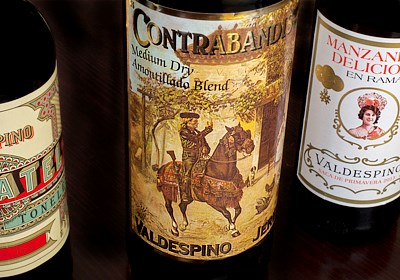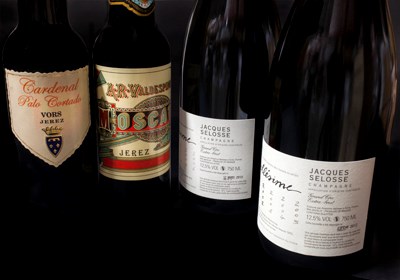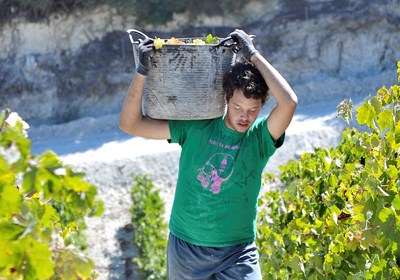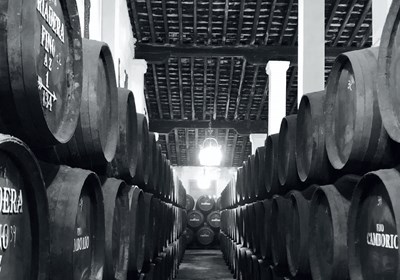
Which site would you like to visit?
By clicking the retail or wholesale site button and/or using rarewineco.com you are choosing to accept our use of cookies to provide you the best possible web experience.
April 25, 2013
Sherry is unique in the way it expresses the chalky albariza soils and the complexity of its soleras, as well as how it’s transformed by the aging process.
The key varietal in Sherry today is the Palomino grape, prized for how gracefully it ages in solera and how purely it communicates albariza’s chalky minerality. Dry Sherries are made entirely from Palomino.
Sweet Sherries are made from either Pedro Ximénez (“PX”) or Moscatel. PX was once common in Jerez but is now sourced from neighboring Montilla, whose hot, dry climate is ideal for sun drying of the grapes for maximum concentration of their sweetness.
The small amount of Moscatel grown is similarly sun-dried for the production of dessert Sherries, and today comes exclusively from the seaside town of Chipiona.
Almost all Sherries are made by the solera system of fractional blending, from barrels arranged in groups, based on age and stage of development.
The wine is bottled from the oldest barrels, which are replenished with wine from the next oldest group of barrels (known as a criadera). That criadera is replenished from the next criadera in terms of age, and so on down the line. The youngest criadera receives new wine.
A solera is a living entity of great complexity, constantly in a state of development through the continuous flow of wines through its system. A great solera develops its own distinct character, while simultaneously retaining the individual voices of the barrels within it, becoming increasingly nuanced as these make their contribution to the blend.
One of the great misconceptions about Sherries is that they are sweet. In fact, the vast majority of fine Sherries are bone dry, and are therefore incredibly versatile with food.
So, rather than looking at Sherries based on their degree of sugar, it’s far more useful to look at which Sherries have been aged under a protective layer of yeast called flor, which profoundly affects their character.
But first, what is flor? It’s a layer of yeast that develops naturally on the surface of the wine in barrel, protecting the wine from oxidation. By consuming sugars, glycerin and volatile acidity, the flor renders the wine stable, very dry and very fresh. And the flor deeply enriches the wine’s flavors, aromas and complexity.
Finos are aged entirely under flor. And so are Manzanillas, the Finos made near the sea in Sanlucar de Barrameda.
If the layer of flor covering a barrel of Fino is allowed to die off completely, the wine inside will eventually become an Amontillado. With the protective layer of flor gone, the wine is exposed to air, lending it a nutty complexity to complement the flor-aged character it acquired previously.
Olorosos are aged entirely without flor, developing great depth and nutty complexity through evaporation and controlled oxidation.
Like Amontillados, Palo Cortados start out as Finos, but having developed an atypical richness, they’re culled from the Fino solera and allowed to develop with exposure to air. Palo Cortados combine the delicacy and finesse of an Amontillado with the richness and structure of an Oloroso.
The preceding Sherries are all bone dry when classically made. But there are classic sweet Sherries as well.
These are made from Pedro Ximénez and Moscatel de Alejandría grapes, which develop their high sugar levels on the vine and then are made even sweeter through raisining in the sun. They develop almost all of their alcoholic strength through fortification as their musts are so sweet that they barely ferment at all, resulting in wines of fantastic sweetness and concentration.






New discoveries, rare bottles of extraordinary provenance, limited time offers delivered to your inbox weekly. Be the first to know.
Please Wait
Adding to Cart.
...Loading...


By clicking the retail or wholesale site button and/or using rarewineco.com you are choosing to accept our use of cookies to provide you the best possible web experience.

